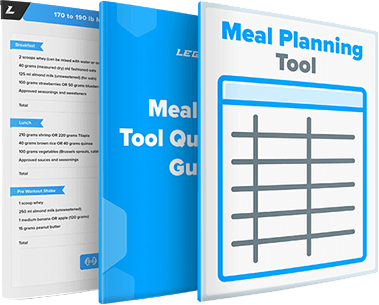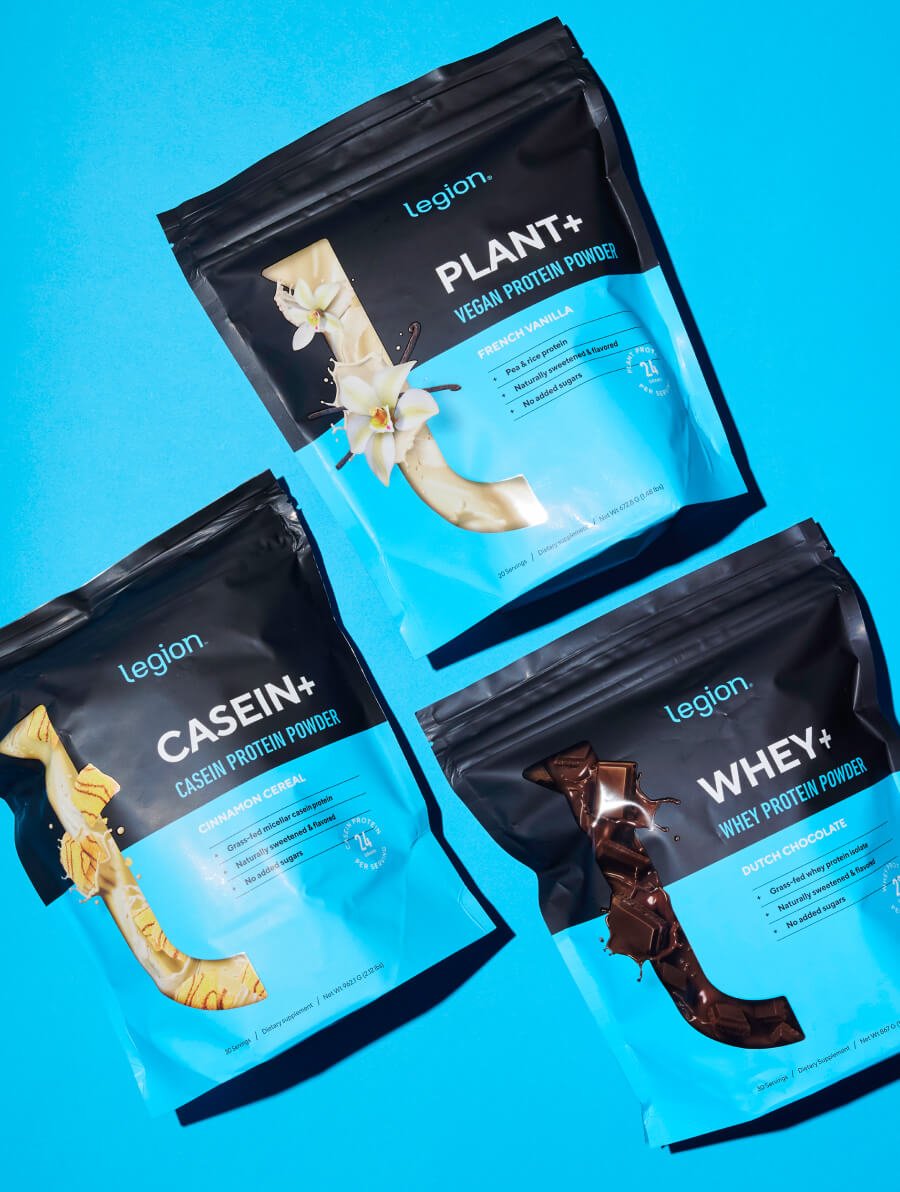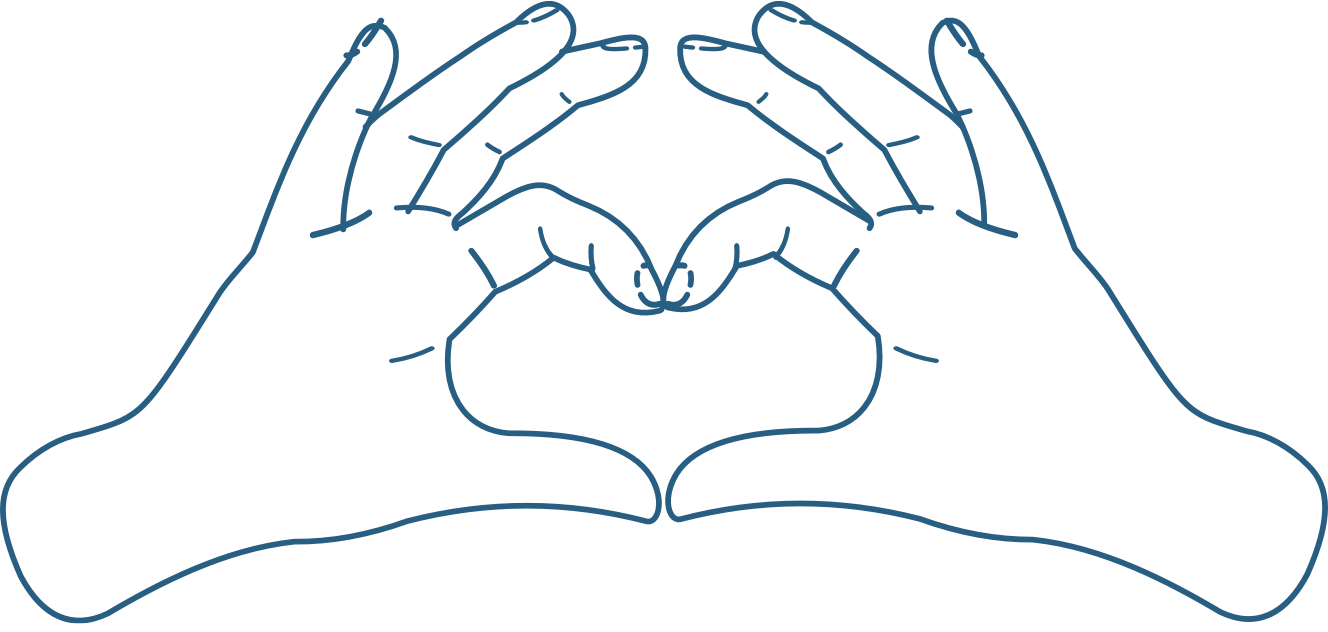Most people are preoccupied with trying to lose weight, but here’s something they don’t know:
It’s only the first step to getting the body they really want.
Because once you’ve lost the weight, you have to keep it off, and that can be just hard, if not harder.
That’s why research shows that dieting simply doesn’t work for most people. Sure, they can step into the breach and lose weight, but many regain it all afterward.
If you’ve dieted before, you probably know how it goes.
After months of restrictive eating and battling with hunger and cravings, it feels downright cathartic to stop worrying about every little calorie and just let go.
And it’s just a little horrifying to see just how quickly you can undo months of hard work when you do.
It’s also hard to forget that experience the next time you consider dieting. Why bother if you know you’re just going to tumble back to square one?
Well, that’s where reverse dieting can help.
It involves gradually increasing your calories after a period of caloric restriction, and with it, you can avoid accidental overeating (or, worse, bingeing), and unwanted fat gain.
You see, losing weight changes more than your appearance in the mirror.
It also produces a host of physiological adaptations that, in short, encourage you to move less and eat more, and prime your body to rapidly regain the fat that you lost.
This is why many people find it so hard to smoothly transition from weight loss to weight maintenance.
The good news, though, is if you navigate this treacherous post-diet period skillfully, you can come out unscathed, and poised for long-term success.
Reverse dieting is a powerful tool to help you with this, and it boils down to three simple steps:
1. Do a lot of heavy compound weightlifting.
2. Eat a high-protein diet.
3. Gradually increase your caloric intake.
Let’s take a look at each.
What did you think of this episode? Have anything else to share? Let me know in the comments below!
Transcript:
This episode is brought to you by me. Seriously though, I’m not big on promoting stuff that I don’t personally use and believe in. So instead, I’m going to just quickly tell you about something of mine. Specifically, my flexible dieting cookbook, The Shredded Chef. Now, this book has sold over 200, 000 copies in the last several years.
And helped thousands of men and women get the bodies they really want, eating the types of food they really love, which is why it has over 700 reviews on Amazon with a four and a half star average. If you wanna know how to build your best body ever without having to follow a boring, bland, overly restrictive bodybuilding diet.
And if you want 125 of my personal favorite recipes for building muscle, losing fat and getting healthy, then you want to pick up the shredded chef today, which you can find on all major online retailers like Amazon, Audible, iTunes, Kobo, and Google play. Now, speaking of audible, I should also mention that you can actually get the audio book 100 percent free.
When you sign up for an audible account, which I highly recommend that you do if you are not currently listening to audio books, I love them myself because they let me make the time that I spend doing stuff like commuting, prepping food, walking my dog and so forth into more valuable and productive activities.
So if you want to take Audible up on this offer and get my book for free, then simply go to www.bitlybitly.com/free tsc, and that will take you to Audible and then you just click the sign up today and save button, create your account, and voila, you get to listen to the Shredded Chef for free. All righty, that is enough shameless plugging.
For now at least let’s get to the show. Hey, Mike Matthews from Muscleful Life and Legion Athletics here. And in this video podcast, we are going to talk about reverse dieting, which is simply a gradual increasing of your calories. Usually when you are transitioning out of a cut. So you’ve just been restricting your calories for some period of time.
You’ve been in a deficit for some period of time to lose fat. Now you’re done losing fat. You’re ready to start eating more food. How do you go about it? You could just jump up to what you hope is your TDE. That’s one way of doing it. And that can work fine. It’s not that’s necessarily bad or wrong, or you can increase your calories a little bit slower.
Nothing over an extended period of time. It’s not okay, you cut for 12 weeks, you need to reverse die for 12 weeks. Not at all. It’s only a few weeks. But I think it has a couple advantages over simply jumping your intake back up to what it was before you started dieting. And the first thing you need to know about this is when you have been restricting your calories for some time, your body adapts in various ways to try to reduce caloric expenditure and increase caloric intake.
It’s trying to erase that deficit because in the end, what are you doing when you are losing fat? You are mildly starving your body. Your body doesn’t like that of course, because if it goes on for too long, it dies and your body doesn’t know your plans. Unfortunately, you can’t convince. Your body that, Hey, this is only going to be for 12 weeks.
Just calm down. You don’t have to create all these physiological adaptations. You don’t have to make it harder on me. Why don’t you let’s go in the other direction. Why don’t you increase testosterone levels, make it easier on me so I can get through my cut faster. And then we’ll go back to eating more.
Unfortunately, it doesn’t work like that. Your body assumes the worst and starts fighting you really from the beginning. And so when you were at the end of a cut, especially if you’ve been, if you have been in deficit for a while, your body is primed to regain fat that you lost. That’s an easy way of looking at it.
It doesn’t mean that you are guaranteed or that you have to regain any of the fat. But if you were to simply go with what your body wants, you would start eating way too much food right away and you would gain more fat than usual from that. And that’s where reverse dieting can be helpful. And again, the crux of reverse dieting is simply gradually increasing your calories in a systematic way to find your new TDE.
And many people don’t realize that. And their TDE after losing a lot of weight is going to be quite a bit lower than it was before they started dieting. And by quite a bit, I mean it could be a difference of one to 200 calories per day, but that can feel fairly significant. 200 calories a day, less food can feel fairly significant if you were used to eating those 200 additional calories every day for a long period of time.
And so the reverse diet allows your body to ease back into eating more food and allows you to psychologically ease back into eating more food. Because what can also happen, and I’ve seen this many times working with many people over the years, is once the cut is done that, people are relieved, finally they can eat more food.
And so they immediately. Let’s. Let’s say, let’s just say a guy, keep the numbers simple. A guy ends his cut at 2000 calories or 1900 calories and he’s used to, here’s me actually, I, when I’m cutting I’m usually starting around 23 and I’m having to end around 1900 whereas my normal daily intake is closer to about 2800.
And that’s a 900 in some cases, maybe even a thousand calorie difference of intake to what I’m used to. Yeah, I’m looking forward to eating more food after, being in a deficit for let’s say 10, 12, 14 weeks and then being in a rather larger or aggressive deficit for at least four of those weeks.
And so what can happen then is your intake can quickly spiral out of control because you no longer have to be in a deficit. You really want to eat more food. You’re not necessarily going to be as disciplined with your tracking and your weighing and your measuring. And you might intend on, let’s say in my case, I might intend on increasing my calories to, let’s say even just 2, 600, a little bit lower, 2, 700, just to see where things are at, see how my body’s doing.
But then you are around food and what is supposed to be 2, 600 or 2, 700 calories turns into 2, 700. 32, 33, 34. And when, again, when you go from the end of a cut and your calories are quite low, let’s say they’re around BMR to, a, what turns into a pretty significant surplus. If you make that jump right away, you are going to gain fat faster than you realize.
Okay. So that’s why I recommend reverse dieting and I do it myself. Again, just to clarify, it’s not so much about the physiological adaptations. I know there are people out there that will make some evidence based arguments as to why reverse dieting is necessary even https: otter. ai post diet fat gain.
And I don’t think that evidence is very compelling or convincing, but again, I still do like the concept of slowly increasing your calories over the course of several weeks to find your new TDE and set your calories into a range where you’re no longer losing weight. You’re no longer gaining weight. And you can go from there if you want to maintain, if you want to go into, a surplus to go into a lean bulk, you can do that without again causing any unnecessary fat gain.
Hey, quickly, before we carry on, if you are liking my podcast, would you please help spread the word about it? Because no amount of marketing or advertising gimmicks can match the power of word of mouth. If you are enjoying this episode and you think of someone else who might enjoy it as well, please do tell them about it.
It really helps me. And if you are going to post about it on social media, definitely tag me so I can say, Thank you. Thank you. You can find me on Instagram at muscle for life fitness, Twitter at muscle for life and Facebook at muscle for life fitness. Okay. So how do you do it? The first thing is when you’re going to do it, make sure that you are doing your heavy compound weightlifting.
This is not a time to cut back on your workouts and do easier workouts, do a bunch of D load workouts. That’s basically no, you want to continue to push yourself in the gym. and doing those heavy compound weightlifting workouts. And by heavy, I mean working with weights that are somewhere in the range of, let’s say 75 to 85 percent of your one rep max at an RPE of about eight or nine.
So you’re ending your sets with about one or two reps still left in the tank. And by compound, focusing on exercises that involve multiple joints and multiple major muscle groups, as opposed to isolation exercises, which are more about isolating one muscle group. So it’s usually a single joint exercise that primarily trains one muscle.
Point number two with reverse dieting is you want to make sure you’re keeping your protein up. This is important regardless of what you’re doing with your diet, really a high protein diet, just is better than a low protein diet in pretty much every way for pretty much every person. There are exceptions of course, but for everyone out there who is relatively healthy and who exercises regularly and especially for people who train their muscles regularly, you’ll want to be eating a high protein diet.
And just to put a number on it, let’s say if you’re eating around one gram of protein per pound of body weight per day, while you are reverse dieting, you are doing it right. And that leaves number three, which is of course, gradually increasing your calories. And what I recommend here is that you increase your total daily caloric intake by about 150 to 250 calories every five to seven days.
So women, when you’re finished cutting, when you’re at the end of a cut, I recommend that you are on the smaller end of that range. So you’re going to be increasing your total daily intake by about 150, maybe 200 calories every five to seven days. And for us guys, a little bit more two to two 50. And that’s the increasing your total daily intake.
Every five to seven days. So for example let’s say I finish a cut at 2000 calories. My first increase will be up to 2200 or 2250, and then a week or so later, it’ll bump up another 200 or 250, and then another week later it’ll bump up another 200, 250. And at that point, you know I’m gonna be done. I’m gonna be more or less back to my td.
And as far as macros go, I like to alternate between increasing my carbs and my fats. And I cap my fat intake, generally speaking at about 80 grams a day. I generally don’t eat more than 80 grams of fat per day because you simply don’t need to. And I’d prefer to eat more carbs because that’s more beneficial to my training and to my quest to gain muscle and strength.
So I prefer More carbs, less fat as opposed to, 150 grams of fat per day, which may be fun. I’m not that into super savory foods, but I’m sure I could figure out how to enjoy that. However, unfortunately, unless I were to start doing a lot of cardio, that would mean I’d have to significantly cut back on my carbs and that would negatively impact my workouts and my post workout recovery.
A couple little things. One is as you are reverse dieting, you may gain a little bit of weight because as you increase your carbs, your body is going to hold a bit more water and a bit more glycogen, which is a form of carbohydrate stored primarily in the liver and the muscles. And on the other hand, you may just continue losing weight.
Many people experience that as well because you still are in a slight deficit in your first couple of weeks of reverse dieting. It’s just a smaller deficit. So you might notice that you lose, you still lose a little bit of weight. You might lose, let’s say you ended your cut at losing a half a pound a week, and you might find that in throughout your reverse dieting, at least through the first couple of weeks.
You are averaging a quarter of a pound loss per week, and that’s fine. You can also find that some people experience that after a cut, especially if it’s been a longer cut, and especially if it’s been a more grueling cut where you’re wanting to get really lean. So you’re having to do a lot of exercise and you’re having to do at least a bit of cardio to get there that by reducing the amount of exercise that you’re doing.
which is of course very common when many people finish cutting, they will drop their cardio from let’s say four sessions a week to maybe two or something like that. So by reducing a bit of the exercise and increasing calories and increasing carbs, you will bring your body’s cortisol levels down, which will cause a kind of whoosh effect as they say in bodybuilding circles where you are just now holding less water on the whole, which of course brings your body weight down and also Makes you look better, makes you look leaner.
And so the point here is it can go either way. You might see a slight uptick in the beginning, in the first week or so, as your muscles in your liver store, more water and glycogen from the increasing carbs. Or you might just see, you might even see a slight downtick. You might see you. A bump in weight loss because your body’s cortisol levels come down from the increased food, the increased carbs, and the decreased exercise, which then results in a kind of whoosh effect, as they say in the bodybuilding circles where you just are holding less water.
And either way, it’s fine. Just keep going. Going. Now, what are you going for? Just in case I didn’t make this clear earlier is you are going for your new maintenance calories, your new total daily energy expenditure. Now, of course you’re never going to get there 100 percent of the dot because it’s always a moving target and we can never fully accurately estimate it, but you want to get to the tight range of daily caloric intake that is going to result in weight maintenance.
Now, no gain, no loss, just maintenance. And of course, the easiest way to do that is you just increase your calories again, systematically, gradually, and you watch your weight, you weigh yourself every day and you just take an average every five to seven days or so. And you’ll see that in the beginning, again, you might see a slight bump in your weight followed by some weight loss.
And then eventually you’ll see as you continue to increase your calories, You’re with the weight loss stops and you are not seeing really much of a change in your weight. And what I like to do is I like to go a little bit further and I like to end where I actually see a little bit of weight gain occurring.
So at the point where I gain a quarter to, so I’ve gone through the initial bump or no bump and the weight loss has stopped and now I continue increasing until I see about a quarter of a pound or so of weight gain in the five to seven day period. period, following the last caloric increase. That’s where I stop my reverse diet.
And that’s what I assume is my new TDE. And the reason why I do that is I’ve found that I can eat a bit more than what causes weight loss to stall without continuing to gain weight. So for example, I might see that weight loss stalls. I’m no longer losing weight Let’s say 2, 600 calories, but I can go up to 2, 800 calories and see a very slight increase in weight.
Nothing that you can see on your, in the mirror. There’s no apparent change in body comp and maintain. So I might be able to go up to 2, 800 calories and eat an extra 200 calories every day with no negative ramifications as opposed to stopping right at 2, 600. So if I can eat more, it’s going to help me in the gym and it’s going to also just help me in general.
It’s just nicer to eat more food. Hey there. It is Mike again. I hope you enjoyed this episode and found it interesting and helpful. And if you did and don’t mind doing me a favor and want to help me make this the most popular health and fitness podcast on the internet, then please leave a quick comment.
review of it on iTunes or wherever you’re listening from. This not only convinces people that they should check the show out, it also increases its search visibility and thus helps more people find their way to me and learn how to build their best bodies ever too. And of course, if you want to be notified when the next episode goes live, then just subscribe to the podcast and you won’t miss out on any of the new goodies.
Lastly, if you didn’t like something about the show, then definitely shoot me an email at Mike at muscle for life. com and share your thoughts on how you think it could be better. I read everything myself and I’m always looking for constructive feedback, so please do reach out. All right, that’s it. Thanks again for listening to this episode and I hope to hear from you.
And lastly, this episode is brought to you by me. Seriously though, I’m not big on promoting stuff that I don’t personally use and believe in. So instead, I’m going to just quickly tell you about something of mine. Specifically, my flexible dieting cookbook, The Shredded Chef. Now, this book has sold over 200, 000 copies in the last several years and helped thousands of men and women get the bodies they really want, eating the types of food they really love, which is why it has over 700 reviews on Amazon with a four and a half star average.
So if you want to know how to build your best body ever without having to follow a boring, bland, overly restrictive bodybuilding diet, And if you want 125 of my personal favorite recipes for building muscle, losing fat, and getting healthy, then you want to pick up the Shredded Chef today, which you can find on all major online retailers like Amazon, Audible.
iTunes, Kobo, and Google play. Now, speaking of audible, I should also mention that you can actually get the audio book, 100 percent free when you sign up for an audible account, which I highly recommend that you do. If you are not currently listening to audio books, I love them myself because they let me make the time that I spend doing stuff like commuting, prepping food, walking my dog and so forth into more valuable and productive activities.
So if you want to take Audible up on this offer and get my book for free, then simply go to www.bitlybitly.com/free tsc, and that will take you to Audible and then you just click the sign up today and save button, create your account. And voila, you get to listen to the Shredded Chef for free.
Scientific References +
- Skein M, Duffield R, Kelly BT, Marino FE. The effects of carbohydrate intake and muscle glycogen content on self-paced intermittent-sprint exercise despite no knowledge of carbohydrate manipulation. Eur J Appl Physiol. 2012;112(8):2859-2870. doi:10.1007/s00421-011-2253-0
- Wang ZM, Heshka S, Zhang K, Boozer CN, Heymsfield SB. Resting energy expenditure: Systematic organization and critique of prediction methods. Obes Res. 2001;9(5):331-336. doi:10.1038/oby.2001.42
- Fatouros IG, Chatzinikolaou A, Tournis S, et al. Intensity of resistance exercise determines adipokine and resting energy expenditure responses in overweight elderly individuals. Diabetes Care. 2009;32(12):2161-2167. doi:10.2337/dc08-1994
- Leibel RL, Hirsch J. Diminished energy requirements in reduced-obese patients. Metabolism. 1984;33(2):164-170. doi:10.1016/0026-0495(84)90130-6
- Weyer C, Walford RL, Harper IT, et al. Energy metabolism after 2 y of energy restriction: The Biosphere 2 experiment. Am J Clin Nutr. 2000;72(4):946-953. doi:10.1093/ajcn/72.4.946
- Mason C, Foster-Schubert KE, Imayama I, et al. History of weight cycling does not impede future weight loss or metabolic improvements in postmenopausal women. Metabolism. 2013;62(1):127-136. doi:10.1016/j.metabol.2012.06.012
- McGnire MT, Wing RR, Klein ML, Hill JO. Behavioral strategies of individuals who have maintained long-term weight losses. Obes Res. 1999;7(4):334-341. doi:10.1002/j.1550-8528.1999.tb00416.x
- Rosenbaum M, Leibel RL. Adaptive thermogenesis in humans. Int J Obes. 2010;34:S47-S55. doi:10.1038/ijo.2010.184
- Weigle DS, Brunzell JD. Assessment of energy expenditure in ambulatory reduced-obese subjects by the techniques of weight stabilization and exogenous weight replacement. In: International Journal of Obesity. Vol 14. ; 1990:69-77. https://www.ncbi.nlm.nih.gov/pubmed/2228420/. Accessed November 28, 2019.
- Weigle DS. Contribution of decreased body mass to diminished thermic effect of exercise in reduced-obese men. Int J Obes. 1988;12(6):567-578. http://www.ncbi.nlm.nih.gov/pubmed/3235273. Accessed November 28, 2019.
- Weyer C, Walford RL, Harper IT, et al. Energy metabolism after 2 y of energy restriction: The Biosphere 2 experiment. Am J Clin Nutr. 2000;72(4):946-953. doi:10.1093/ajcn/72.4.946
- Levine JA, Vander Weg MW, Hill JO, Klesges RC. Non-exercise activity thermogenesis: The crouching tiger hidden dragon of societal weight gain. Arterioscler Thromb Vasc Biol. 2006;26(4):729-736. doi:10.1161/01.ATV.0000205848.83210.73
- Levine JA. Non-exercise activity thermogenesis (NEAT). Best Pract Res Clin Endocrinol Metab. 2002;16(4):679-702. doi:10.1053/beem.2002.0227
- Miles CW, Wong NP, Rumpler W V., Conway J. Effect of circadian variation in energy expenditure, within-subject variation and weight reduction on thermic effect of food. Eur J Clin Nutr. 1993;47(4):274-284. https://www.ncbi.nlm.nih.gov/pubmed/8491165/. Accessed November 28, 2019.
- Tappy L. Thermic effect of food and sympathetic nervous system activity in humans. In: Reproduction Nutrition Development. Vol 36. EDP Sciences; 1996:391-397. doi:10.1051/rnd:19960405
- Mäestu J, Eliakim A, Jürimäe J, Valter I, Jürimäe T. Anabolic and catabolic hormones and energy balance of the male bodybuilders during the preparation for the competition. J Strength Cond Res. 2010;24(4):1074-1081. doi:10.1519/JSC.0b013e3181cb6fd3
- Weyer C, Walford RL, Harper IT, et al. Energy metabolism after 2 y of energy restriction: The Biosphere 2 experiment. Am J Clin Nutr. 2000;72(4):946-953. doi:10.1093/ajcn/72.4.946
- Mäestu J, Jürimäe J, Valter I, Jürimäe T. Increases in ghrelin and decreases in leptin without altering adiponectin during extreme weight loss in male competitive bodybuilders. Metabolism. 2008;57(2):221-225. doi:10.1016/j.metabol.2007.09.004
- MacLean PS, Bergouignan A, Cornier MA, Jackman MR. Biology’s response to dieting: The impetus for weight regain. Am J Physiol - Regul Integr Comp Physiol. 2011;301(3). doi:10.1152/ajpregu.00755.2010
- Johnstone AM, Murison SD, Duncan JS, Rance KA, Speakman JR. Factors influencing variation in basal metabolic rate include fat-free mass, fat mass, age, and circulating thyroxine but not sex, circulating leptin, or triiodothyronine. Am J Clin Nutr. 2005;82(5):941-948. doi:10.1093/ajcn/82.5.941
- Bosy-Westphal A, Braun W, Schautz B, Müller MJ. Issues in characterizing resting energy expenditure in obesity and after weight loss. Front Physiol. 2013;4 MAR. doi:10.3389/fphys.2013.00047
- Trexler ET, Smith-Ryan AE, Norton LE. Metabolic adaptation to weight loss: Implications for the athlete. J Int Soc Sports Nutr. 2014;11(1). doi:10.1186/1550-2783-11-7
- Hand GA, Shook RP, Paluch AE, et al. The energy balance study: The design and baseline results for a longitudinal study of energy balance. Res Q Exerc Sport. 2013;84(3):275-286. doi:10.1080/02701367.2013.816224
- Sumithran P, Prendergast LA, Delbridge E, et al. Long-Term Persistence of Hormonal Adaptations to Weight Loss. N Engl J Med. 2011;365(17):1597-1604. doi:10.1056/NEJMoa1105816










